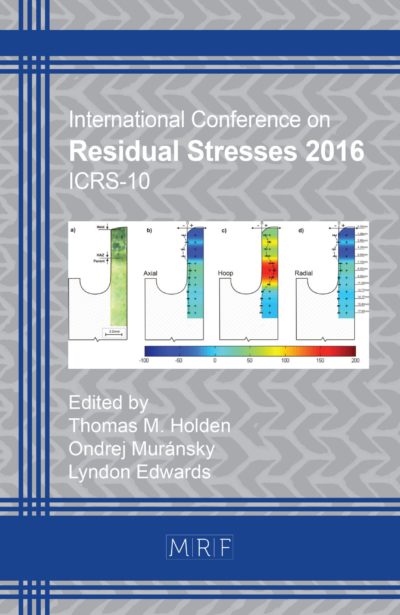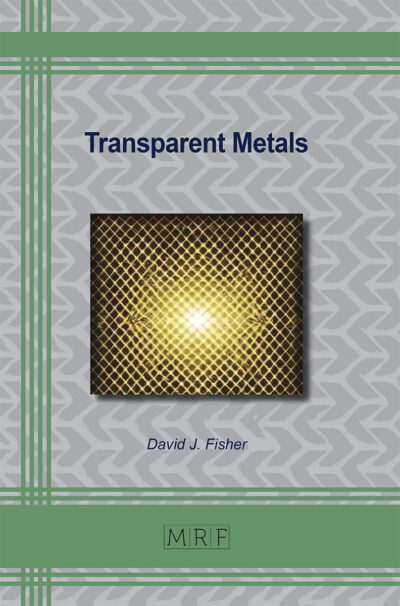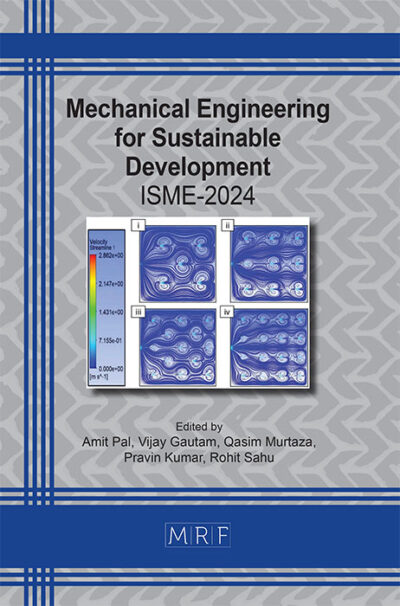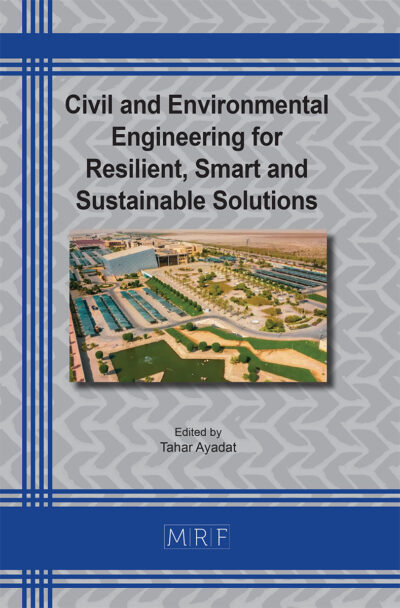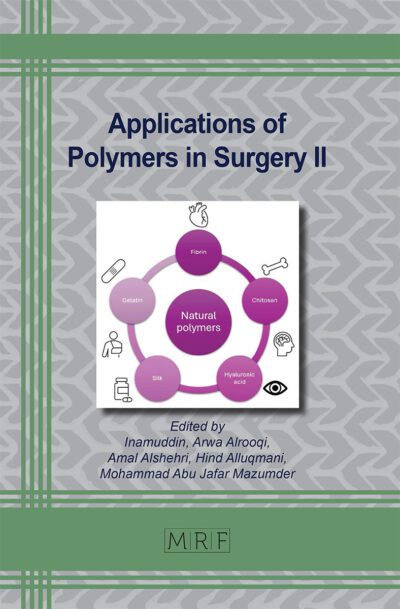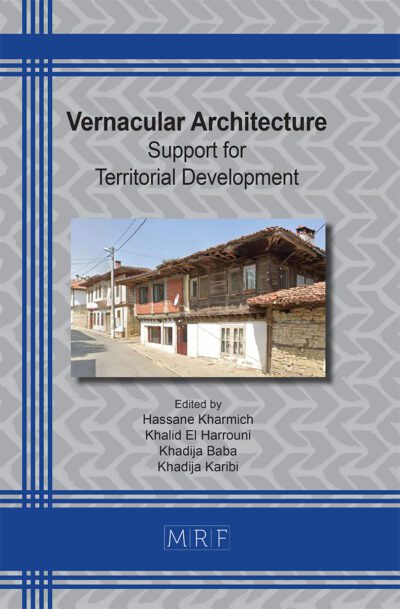Investigating the rheological properties of rubberized-bitumen blends modified with warm mix additives
Haya ALMUTAIRI, Zainab AWADH
Abstract. Crumb rubber modified asphalt (CRMA) can significantly contribute to environmental sustainability by reusing recycled tire crumbs as well as extending the service life of asphalt pavement. Ground Tire Rubber (GTR) has been successfully utilized in Kuwait as an additive in Hot Mix Asphalt (HMA) with a percentage of 12.5% of the binder weight. In the present work, the aim is to increase the GTR content to 17.5% of the binder weight to achieve maximum environmental benefit. This presents a significant challenge during the construction of the pavement, as incorporating a high content of GTR in asphalt binder considerably increases the viscosity of the asphalt, hence adversely affecting its workability. Therefore, the main objective of this study is to investigate the effectiveness of using “Viscobit” polymers to improve the rheological properties of the rubber-bitumen blend. This study made significant contributions to the advancement of research on rubberized asphalt conducted by Kuwait Institute for Scientific Research team. Conclusions and recommendations for future work are included in this paper.
Keywords
Bitumen, Crumb Rubber, Warm Additives, Viscosity
Published online 2/25/2025, 7 pages
Copyright © 2025 by the author(s)
Published under license by Materials Research Forum LLC., Millersville PA, USA
Citation: Haya ALMUTAIRI, Zainab AWADH, Investigating the rheological properties of rubberized-bitumen blends modified with warm mix additives, Materials Research Proceedings, Vol. 48, pp 1061-1067, 2025
DOI: https://doi.org/10.21741/9781644903414-114
The article was published as article 114 of the book Civil and Environmental Engineering for Resilient, Smart and Sustainable Solutions
![]() Content from this work may be used under the terms of the Creative Commons Attribution 3.0 license. Any further distribution of this work must maintain attribution to the author(s) and the title of the work, journal citation and DOI.
Content from this work may be used under the terms of the Creative Commons Attribution 3.0 license. Any further distribution of this work must maintain attribution to the author(s) and the title of the work, journal citation and DOI.
References
[1] Hagagy, A. (2021) Kuwait starts to Recycle Massive Tyre Graveyard, Reuters. Available at: https://www.reuters.com/world/middle-east/kuwait-starts-recycle-massive-tyre-graveyard-2021-09-07/ (Accessed: 12 November 2023).
[2] Presti, D. L. (2013). Recycled tyre rubber modified bitumens for road asphalt mixtures: A literature review. Construction and Building Materials, 49, 863-881. https://doi.org/10.1016/j.conbuildmat.2013.09.007
[3] Ibrahim, M. R., Katman, H. Y., Karim, M. R., Koting, S., & Mashaan, N. S. (2013). A review on the effect of crumb rubber addition to the rheology of crumb rubber modified bitumen. Advances in Materials Science and Engineering, 2013. https://doi.org/10.1155/2013/415246
[4] Poulikakos, L. D., Buttlar, W., Schüwer, N., Lo Presti, D., Balmer, T., & Bueno, M. (2022). Can crumb rubber modifier effectively replace the use of polymer-modified bitumen in asphalt mixture?. Sustainable and Resilient Infrastructure, 7(5), 515-530. https://doi.org/10.1080/23789689.2021.1965428
[5] Oikonomou, N., & Mavridou, S. (2009). The use of waste tyre rubber in civil engineering works. In Sustainability of construction materials (pp. 213-238). Woodhead Publishing. https://doi.org/10.1533/9781845695842.213
[6] Zhao, Y., Chen, M., Wu, S., Jiang, Q., Xu, H., Zhao, Z., & Lv, Y. (2022). Effects of waterborne polyurethane on storage stability, rheological properties, and VOCs emission of crumb rubber modified asphalt. Journal of Cleaner Production, 340, 130682. https://doi.org/10.1016/j.jclepro.2022.130682
[7] Lougheed, T. J., & Papagiannakis, A. T. (1996). Viscosity characteristics of rubber-modified asphalts. Journal of materials in civil engineering, 8(3), 153-156. https://doi.org/10.1061/(ASCE)0899-1561(1996)8:3(153)
[8] Thodesen, C., Shatanawi, K., & Amirkhanian, S. (2009). Effect of crumb rubber characteristics on crumb rubber modified (CRM) binder viscosity. Construction and Building Materials, 23(1), 295-303 https://doi.org/10.1016/j.conbuildmat.2007.12.007
[9] Ding, Z., Li, P., Zhang, J., Bing, H., & Yue, X. (2020). Analysis of viscosity test conditions for crumb-rubber-modified asphalt. Construction and Building Materials, 245, 118454. https://doi.org/10.1016/j.conbuildmat.2020.118454
[10] Zoorob, S. E., & Al-Bahar, S. (2018). Preliminary rheological characterization of tyre derived crumb rubber blended with Kuwaiti bitumen. In MATEC Web of Conferences (Vol. 203, p. 05001). EDP Sciences https://doi.org/10.1051/matecconf/201820305001
[11] Kim, H. H., & Lee, S. J. (2015). Effect of crumb rubber on viscosity of rubberized asphalt binders containing wax additives. Construction and Building Materials, 95, 65-73. https://doi.org/10.1016/j.conbuildmat.2015.07.066
[12] Viscobit 200. (2023). Retrieved May 20, 2024, from https://viscobit.de/wp-content/uploads/2023/03/TDS-Viscobit-200.pdf
[13] American Association of State Highway and Transportation Officials (AASHTO). (2015). Standard Method of Test for Kinematic Viscosity of Asphalts (Bitumen); AASHTO T 201. Washington, D.C.: American Association of State Highway and Transportation Officials.
[14] American Association of State Highway and Transportation Officials (AASHTO). (2015). Standard Practice for Grading or Verifying the Performance Grade (PG) of an Asphalt Binder; AASHTO R29. Washington, D.C.: American Association of State Highway and Transportation Officials.


